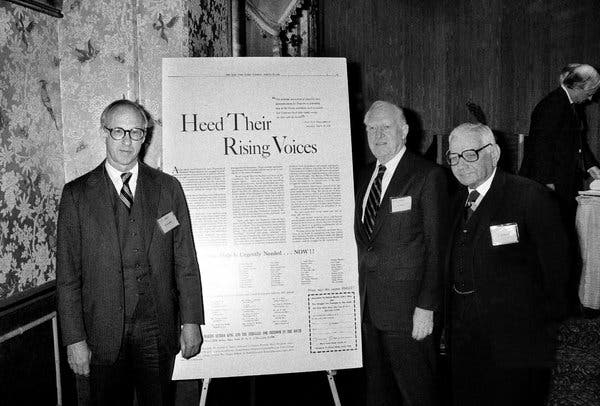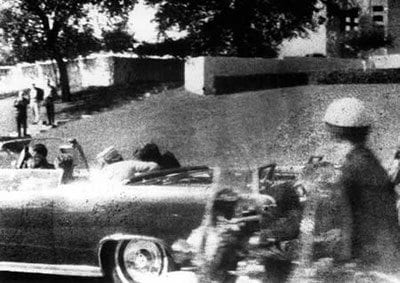The 1964 decision in New York Times v. Sullivan has since protected many media outlets from lawsuits in spite of their intentional ‘hit pieces.’ D.C. Circuit Court Judge Laurence Silberman, a Reagan appointee, outlined his opposition to the Supreme Court’s key decision when he wrote in a March 19, 2021 decision that the ruling is “a threat to American Democracy” and must be overturned.
“The increased power of the press is so dangerous today because we are very close to one-party control of these institutions. Our court was once concerned about the institutional consolidation of the press leading to a ‘bland and homogenous’ marketplace of ideas. It turns out that ideological consolidation of the press (helped along by economic consolidation) is the far greater threat,” he continued.
“Although the bias against the Republican Party—not just controversial individuals—is rather shocking today, this is not new; it is a long-term, secular trend going back at least to the ’70s. (I do not mean to defend or criticize the behavior of any particular politician).
Two of the three most influential papers (at least historically), The New York Times and The Washington Post, are virtually Democratic Party broadsheets. And the news section of The Wall Street Journal leans in the same direction. The orientation of these three papers is followed by The Associated Press and most large papers across the country (such as the Los Angeles Times, Miami Herald, and Boston Globe).
Nearly all television—network and cable—is a Democratic Party trumpet. Even the government-supported National Public Radio follows along,” he added.
Silberman was writing a partial dissent in the case of Liberian government officials Christiana Tah and Randolph McClain versus Global Witness Publishing, an organization that investigates human rights abuses.
“It should be borne in mind that the first step taken by any potential authoritarian or dictatorial regime is to gain control of communications, particularly the delivery of news. It is fair to conclude, therefore, that one-party control of the press and media is a threat to a viable democracy. It may even give rise to countervailing extremism,” Silberman concluded.
“The First Amendment guarantees a free press to foster a vibrant trade in ideas. But a biased press can distort the marketplace. And when the media has proven its willingness—if not eagerness—to so distort, it is a profound mistake to stand by unjustified legal rules that serve only to enhance the press’ power.”
Coincidentally, Justice Clarence Thomas issued a concurring opinion 2 years earlier arguing that the 1964 case was wrongly decided and ought be overturned when an appropriate case comes before the Court.
Justice Clarence Thomas on Tuesday called for the Supreme Court to reconsider New York Times v. Sullivan, the landmark 1964 ruling interpreting the First Amendment to make it hard for public officials to prevail in libel suits.
He said the decision had no basis in the Constitution as it was understood by the people who drafted and ratified it.
“New York Times and the court’s decisions extending it were policy-driven decisions masquerading as constitutional law,” Justice Thomas wrote.
Justice Thomas, writing only for himself, made his statement in a concurring opinion agreeing that the court had correctly turned down an appeal from Kathrine McKee, who has accused Bill Cosby of sexual assault. She sued Mr. Cosby for libel after his lawyer said she had been dishonest.
An appeals court ruled against Ms. McKee, saying that her activities had made her a public figure and that she could not prove, as required by the Sullivan decision, that the lawyer had knowingly or recklessly said something false. Ms. McKee asked the Supreme Court to review the appeals court’s determination that she was a public figure.
Justice Thomas wrote that he agreed with the court’s decision not to take up that question. “I write to explain why, in an appropriate case, we should reconsider the precedents that require courts to ask it in the first place,” he wrote.
In Justice Thomas’s view, the First Amendment did nothing to limit the authority of states to protect the reputations of their citizens and leaders as they saw fit. When the First Amendment was ratified, he wrote, many states made it quite easy to sue for libel in civil actions and to prosecute libel as a crime. That was, he wrote, as it should be.
“We did not begin meddling in this area until 1964, nearly 175 years after the First Amendment was ratified,” Justice Thomas wrote of the Sullivan decision. “The states are perfectly capable of striking an acceptable balance between encouraging robust public discourse and providing a meaningful remedy for reputational harm.”
The problem with the original case is not the need to balance policy interests protecting the reputations of “public figures” relative to the chilling effect that the mere threat of litigation can have even on the publication of truthful speech. The problem is deciding which branch of government is most appropriate to weigh those interests in relation to one another, the judiciary or the legislature.
One can agree entirely with the policy decision represented in New York Times v. Sullivan while believing the decision should be overturned because decisions of those sort should be made by legislators rather than by judges. As Thomas wrote in his decision, “New York Times and the Court’s decisions extending it were policy-driven decisions masquerading as constitutional law.”
A judge or justice agreeing with Thomas could vote to overturn the decision in New York Times, resign from the bench to run for the legislature, then, as a legislator, vote for a bill that would adopt the same standard the legislator voted against as a judge. There would be no contradiction in the person’s behavior. What is an appropriate decision for a legislator to make is not necessarily an appropriate decision for a judge to make.
Secondly, discussion of the decision New York Times often gets framed in terms most favorable to the press: Its role in communicating information vital to democratic decision making and the desire to avoid self-censorship on the part of the media.
Framing the case around the protection of unprofessional behavior on the part of journalists reduces the romantic picture of the media painted by the Court.
To be sure, the decision does allow recovery of damages for false, defamatory statements published with the knowledge they were false or published with reckless disregard for their truthfulness. What this standard protects, however, is the publication of false, defamatory statements that resulted from negligence. Merely negligent behavior is still unprofessional behavior even though it does not rise to the level of “reckless” behavior on the culpability scale.
Negligence is “a failure to behavior with the level of care that someone of ordinary prudence would have exercised under the same circumstances.” A journalist who negligently defamed an individual would be protected under the standard announced in New York Times even though the journalist failed to exercise that degree of care a journalist of ordinary prudence would have exercised under the same circumstances. The decision immunizes unprofessional behavior from legal liability irrespective of the substantial damage the reporting of false, defamatory statements that unprofessional behavior might cause to a public official.
In reading the original case one gets the image of small-town newspapers taking on the deep-pocketed Mr. Potters of the world. (Recall Mr. Potter is the villain in the Jimmy Stewart film, It’s a Wonderful Life.)
Yet with the significant increase in market concentration that has occurred in the media over the last generation, the accuracy of this picture is questionable. The media are often the deep-pocketed parties in these disputes rather than the government officials.
Further, the publication of salacious stories is one means by which the media attract readers and viewers, and thereby command higher advertising or subscription rates. Legally protecting unprofessional journalistic behavior of profit-making businesses in today’s media environment arguably invites a different balancing of interests than it did in 1964.
There is the additional question of how the decision relates to the type of person willing to get involved in government in the U.S. The notion politicians are fair game for defamation as long as the false statements are not published with “actual malice” can’t help but deter some decent individuals otherwise from exposing themselves to this sort of treatment, at least at the margin. I am unsure we have so many of these types of politicians in government in the first place to deter them by privileging negligent defamation from recovery.
None of this is to suggest that legislatures would necessarily balance interests any differently than the Court did in New York Times. And there is concern legislators might see themselves desiring to file these actions against the media more than judges do, and so legislatively balance interests with a self-interested thumb on the scale relative to judges. Irrespective, Thomas is correct that the policy decision of the U.S. Supreme Court in New York Times reflects a legislative accommodation between the different interests. And legislative decisions should be made by legislators, not by judges.
James R. Rogers is Associate Professor of Political Science at Texas A&M University and Contributing Editor at Law & Liberty. He teaches and publishes at the intersection of law, politics, and game theory. He has published articles in the American Journal of Political Science, the Journal of Law, Economics, and Organization, Public Choice, and in numerous other journals. He edited and contributed to the book Institutional Games and the Supreme Court, and served as editor of the Journal of Theoretical Politics from 2006 through 2013.
Source: LawLiberty (with additions from ZeroHedge)



